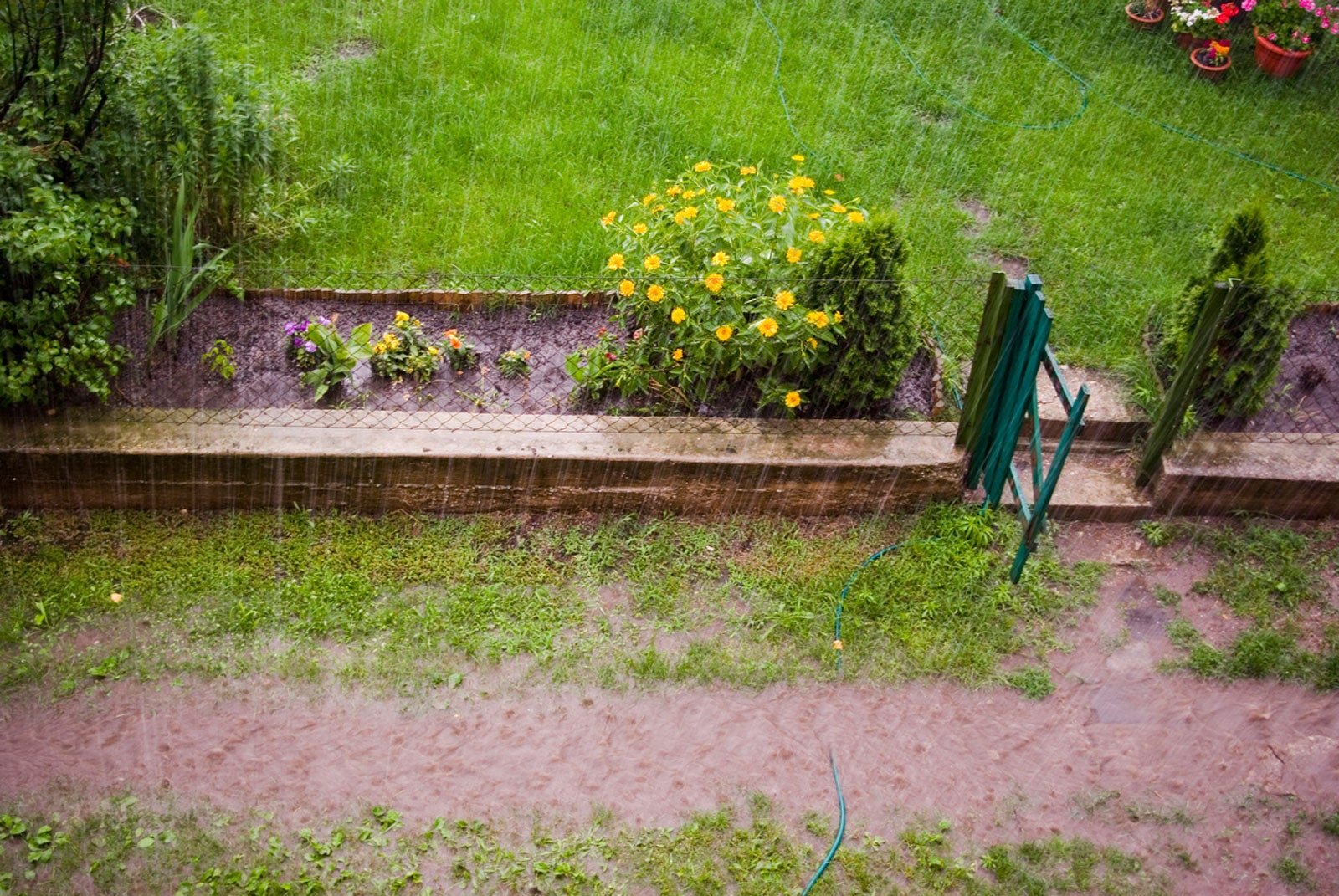Torrential Rains And Plants: What To Do If Rain Is Knocking Down Plants


Rain is as important to your plants as sun and nutrients, but like anything else, too much of a good thing can spell trouble. When rain is knocking down plants, gardeners often despair, worried that their precious petunias will never be the same. Although plants flattened by rain are a troubling sight, torrential rains and plants have been co-existing for thousands of years -- healthy plants are perfectly capable of managing rain damage.
Will Plants Recover from Rain Damage?
Heavy rain damage on plants may leave them looking like they've been flattened to within an inch of their lives, but if you take a closer look at stems and branches, you'll notice something amazing -- most of those rain damaged parts are bent, not broken. Your plants may look terrible, but their flexibility saved them from a monstrous rain storm. If instead they remained rigid in the face of such an intense beating, their tissues would have broken or cracked, causing important transportation pathways to be severed. A few days to a week after a damaging storm, your plants will perk back up. Sometimes flowers are damaged and leaves slightly torn, but your plants will replace these injured areas much faster than it seems possible if you leave them alone to do it. Don't try to prop plants that are rain-flattened, since this can lead to additional damage. Let them be, and watch them come back from their beating.
Help for Rain Damaged Plants
Healthy plants can take a good pounding from the rain and will come back for more, but if your plants have been over fertilized or are planted in an area where the light is really too low for them, you may have a problem. Under these conditions, your plants may have developed leggy, weak growth that was unable to flex enough to protect them from damage. If your plant stems are broken, rather than bent, you can help them recover by removing severely damaged tissues within a week after the damaging rain. This makes room for new leaves and shoots, and helps prevent the damaged, browning tissues from encouraging disease. In the future, perform a soil test before fertilizing and make sure that your plants are getting enough light to develop strong stems and branches.
Sign up for the Gardening Know How newsletter today and receive a free copy of our e-book "How to Grow Delicious Tomatoes".

Kristi Waterworth was a regular contributor to Gardening Know How for many years, answering countless queries on plant pests and diseases.